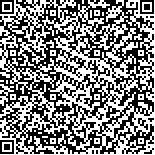| This article has been:Browse 1750Times Download 2657Times |

scan it! |
|
|
| DOI:10.13522/j.cnki.ggps.2019157 |
|
| The Effect of Temperature on Emitter Clogging in Low-pressure Drip Fertilization System |
|
WANG Haoxiang1, ZHANG Xinyan1*, NIU Wenquan1,2, LIU Min1, LI Bin1
|
|
(1.College of Water Conservancy and Architectural Engineering, Northwest A&F University, Yangling 712100, China; 2. Institute of Soil and Water Conservancy, Northwest A&F University, Yangling 712100, China
|
| Abstract: |
| 【Background】Drip fertigation is an effective way to concurrently replenish water and nutrients to meet the demand of crops, and precising fertigation can improve water and fertilizer use efficiency. As the key component in drip irrigation system, the emitter is to dissipate the pressurized water ensuring that water is supplied to the root zone uniformly and steadily. However, the emitter is also susceptible to clogging due to its narrow channel through which water flows. Emitter clogging is affected by many factors and what is less understood is the role of temperature.【Objective】The purpose of this paper is to experimentally investigate the effects of temperature on emitter clogging in low-pressure drip fertigation system.【Method】 Using a short-cycle intermittent irrigation test method, a completely randomized experiment considering temperature, operating pressure and fertilizer concentration was conducted to study emitter clogging in attempts to find a threshold fertilizer concentration beyond which the emitter is susceptible to clogging.【Result】Rising temperature and operating pressure while lowing fertilizer concentration reduced the risk of emitter clogging. When the working pressure was 50 kPa and fertilizer concentration was 3 g/L, the dripping rate of the emitter peaked at temperature 40 ℃, the clogging rate was the least and the irrigation uniformity was the highest. The threshold fertilizer concentration varied with temperature, being 4 g/L, 5 g/L, 7 g/L and 8 g/L when the temperature was 10 ℃, 20 ℃, 30 ℃ and 40 ℃ respectively. 【Conclusion】Rising temperature and operating pressure, along with reducing fertilizer concentration, can effectively reduce the risk of emitter clogging. While rising temperature increased the threshold of fertilizer concentration and the ability of the water to carry solid particles, the efficacy of rising temperature in alleviating emitter clogging decreased as water pressure increased. |
| Key words: Low-pressure drip irrigation system; temperature; fertilization; emitter clogging; fertilizer concentration threshold. |
|
|